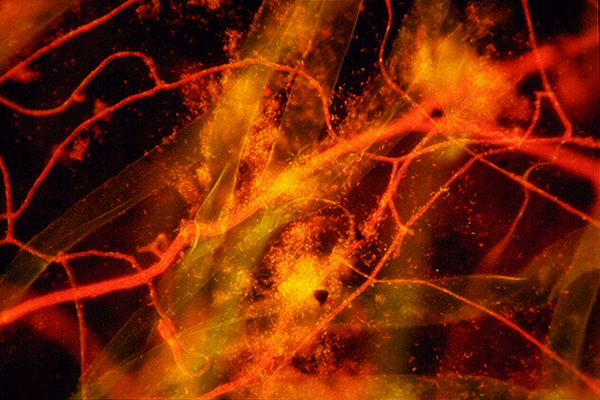If you think it's weird that plants
can "talk" to one another, here's something even weirder:
one way they talk to one another is via a network of underground fungus!
Many plants have a chemical armory that they deploy when aphids attack,
with chemicals that both repel the aphids and attract parasitic wasps
that are aphids' natural predators.
The team grew sets of five broad bean plants, allowing three in each
group to develop mycorrhizal networks, and preventing the networks'
growth in the other two.
To prevent any through-the-air chemical communication, the plants were
covered with bags.
As the researchers allowed single plants in the sets to be infested
with aphids, they found that if the infested plant was connected to
another by the mycorrhizae, the un-infested plant began to mount its
chemical defense.
Those unconnected by the networks appeared not to receive the signal
of attack, and showed no chemical response.


No comments:
Post a Comment